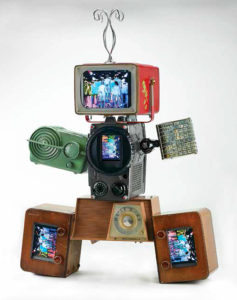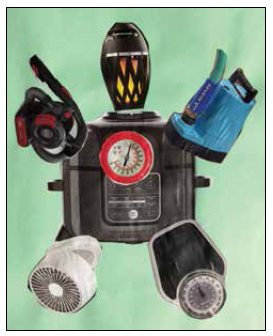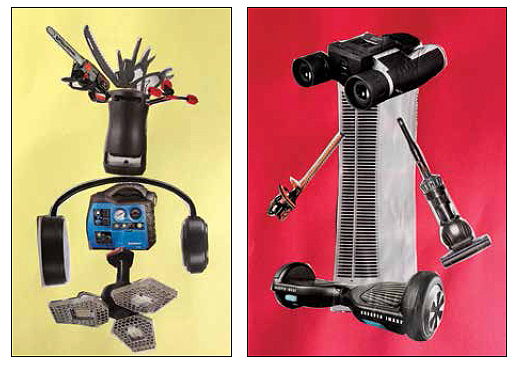 by MaryAnn F. Kohl
by MaryAnn F. Kohl
All materials on this website are subject to copyright. All rights reserved.
For questions or permissions to reprint, contact MaryAnn HERE.
Nam June Paik (NAHM JUN PAY) built a robot contraption in 1964 called “Robot K-456”, a remote control art machine that could walk, talk, and perform.
Nam June Paik – Robot People
Nam June Paik was born in Korea, grew up in Japan, studied video art in Germany, and eventually lived in New York City. He built his first robot contraption in 1964 called “Robot K-456”, a remote control art machine that could walk, talk, and perform. Nam June Paik is a contemporary sculptor who uses television sets to build robot people. Paik has made whole families of robot people or TV sculptures with grandparents, aunts and uncles, parents and kids. Many TV’s in Paik’s sculptures are electronically wired together to play videos that Paik makes himself.
For an easy project, the young artist invents a robot design on paper using a pile of old tool and appliance catalogs. For a more challenging video art project, the artist builds a robot including a videotape of a real person’s face to be used as the robot’s head in the sculpture.
 Materials:
Materials:
Easy Paper Robot –
- old catalogs to cut up (especially tool, computer, and appliance catalogs)
- white drawing paper
- scissors
- glue
Challenging Video Robot –
- large sheets of cardboard
- glue and tape, stapler
- working TV and VCR
- blank video tape
- knife to cut cardboard, adult only
- camcorder
And materials to decorate the cardboard shape of your robot, such as
- paints and brushes
- shiny wrapping paper
- ribbon
- beads
- cellophane
- scraps of carpet
- general collage and junk collection
- colored paper
- foil
- buttons
- plastics
- scraps of wallpaper
- parts of broken toys and machines
Process:
Easy Paper Robot:
 1. Look through catalogs to find just the right pages of tools, hardware, or appliances for the robot design. Tear out those pages to save. Set the catalogs aside when done.
1. Look through catalogs to find just the right pages of tools, hardware, or appliances for the robot design. Tear out those pages to save. Set the catalogs aside when done.
2. Cut parts for the robot creation from the torn pages that were saved. Use anything that is part of a tool or a machine. Cut carefully right along the edge of the picture.
3. Glue the cut-out parts together on paper to “build” a robot. For example, a TV might be the head of a robot, buttons from a telephone might be the chest of the robot, and perhaps some portable stereo radios might be the legs. There is no right or wrong way to put together these crazy robots!
4. Glue on lots of little robot details, like dials and digital read-outs, control panels, switches, antenna, wires and cords.
5. Give the robot a name and think about its abilities. What can it do? What does it do best of all? Does it talk? How would it move? What trouble can it get into?
Challenging Video Robot:
1. With adult help, video tape the head and face of someone so their face fills the screen. This face action will be the head of the robot when the tape is played in the VCR and TV. The person being taped should make faces, pretend to talk, use lots of facial expressions, and keep the face active. It is not necessary to record any sound or talking for this robot face.
2. Meanwhile, place the TV and VCR on a strong, safe table.
3. An adult can cut the cardboard as directed by the artist to frame the TV screen and build the robot’s body shape. The TV screen will be the robot’s head.
4. Decorate the cardboard with junk, collage items, beads, and paint and things to make the robot more life-like. Parts of broken toys and machines are very robot-like and fun to use.
5. Now, with adult help, insert the tape of the animated face in the VCR. Turn it on. Push play. Look at the life-like robot with the amazing action face.

